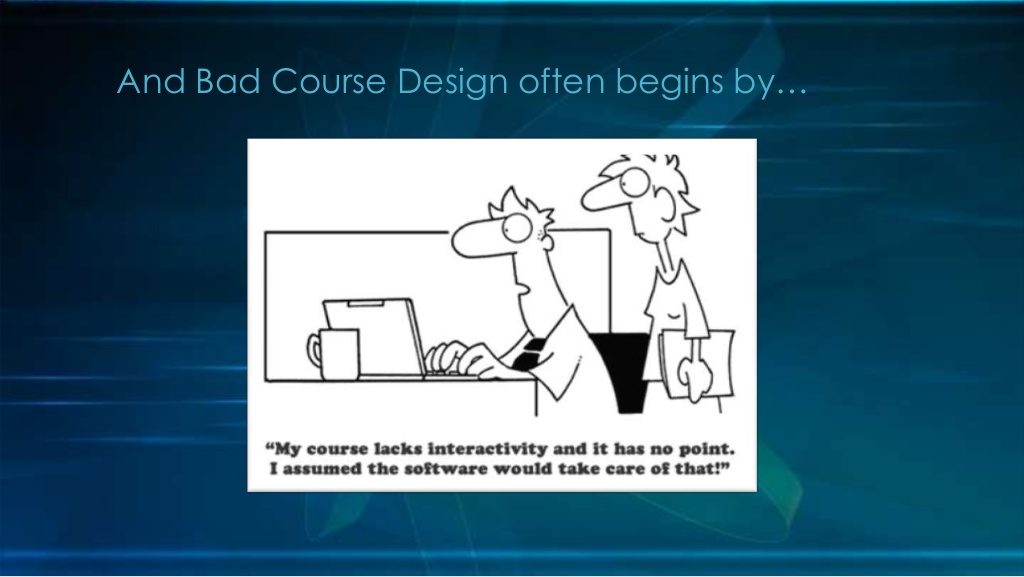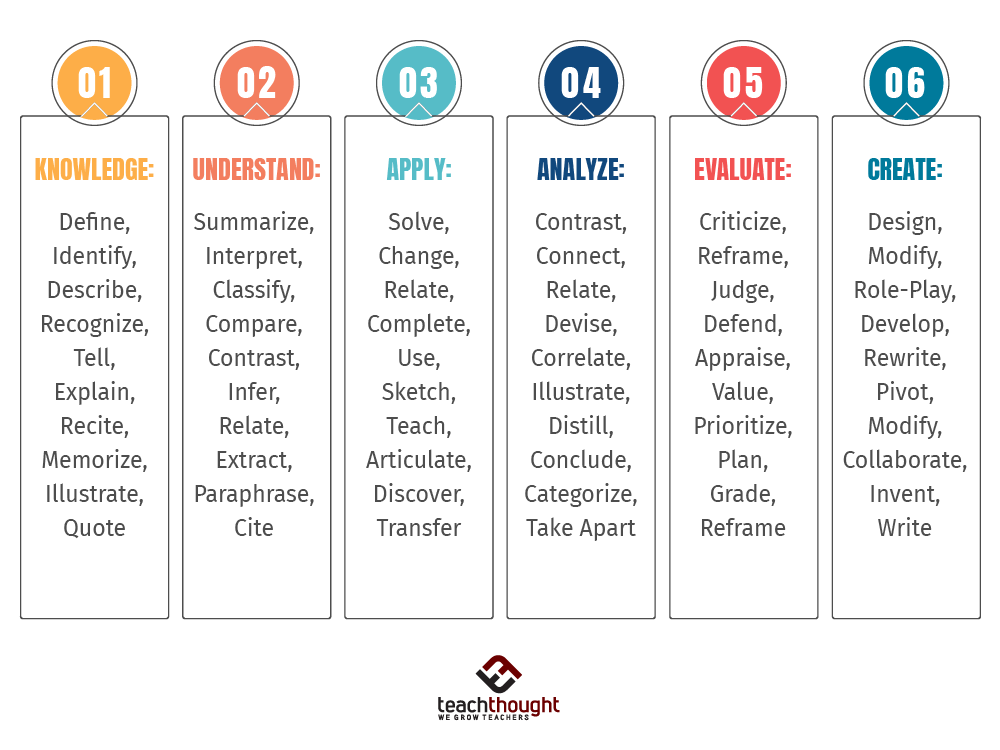Online course design should look to traditional course design principles for inspiration. as these are rooted in years of research on instructional design practices. So when you sit down to design your next online course, keep in mind a few key course design principles. that will help guide your content creation and organization. How you incorporate these may differ slightly depending on which online course platform you are using, and what the end purpose and audience for your online course are.
Online course design is not only about the content that you choose or create for your course. It’s a set of principles and a process that addresses. what content will be presented to students, learning materials, activities, and assessments?
The goal of online course design is to focus on learning rather than teaching.
Online course design combines elements of content, technical and instructional design. When an online course is not well-designed, often the student doesn’t know where to start, is not sure where to find resources, how to interact, or how to learn. And that’s not good for your online course sales!
Online course design principles are not something you learn overnight. Your average Teachable or Udemy instructor is likely, not formally educated in the concept of online course design, and how it relates to learning in the pedagogical sense. Unless you are a teacher at an elementary, secondary or higher education school you like are not familiar with the “ADDIE” framework, for example.

Nevertheless, whether you are embarking on your online course design journey, or revising an existing online course, it’s good to have at least a few online course design concepts top of mind in order to avoid poor learning, and thus poor course performance results.
We’ve put together a brief list of these most common online course design principles borrowed from traditional educational sources. There are many more than these – course design is essentially a field of study unto itself.
1. Learn from other online course designers
If you are designing your online course to be a new business or to compete with dozens of other courses on Udemy, it may feel like you are cheating to look at how other instructors have designed their online courses. But there’s nothing wrong with looking at how others have designed their courses for different channels and reasons in order to get some ideas and inspiration. (But we do not encourage plagiarism of material or ideas!)
For instance, initially, you might have one plan for the order of topics to be covered in a module, but you might find by perusing other online courses like yours that a different order is more clear, or that you omitted an interesting concept or lesson. Observing what resources, curriculums, and even textbooks a MOOC course uses will provide good information to use in this planning phase of course design.
Also when you outline your online course look at other people’s curriculums for inspiration and as a kind of “checklist”.
2. Identify all course learning objectives
If you are teaching a Udemy course on your favorite hobby, it may not feel as if you are really teaching specific “learning outcomes”, but rather like you are simply sharing your passion with others. Easy right? The reality is, to “teach” you need specific “learning” to occur. That’s what students expect. This specific learning is your course learning objective.
There is an entire school of thought on how to design learning objectives. We won’t go into that much detail here. In your online course design, envision what you want students to know, do and even say after taking your course. Answer the questions “what is the problem learners are dealing with?” What is the purpose of the course?” And identify the following:

- What exact concepts do you want them to learn?
- The level (i.e. beginner through expert) of knowledge they should attain
- Verbs to describe behaviors during and after the course (i.e. will create X). Bloom’s Taxonomy can help with this.
- Criteria to measure learning achievement
Write these answers down and convert these learning objectives. Then break these objectives down into smaller units (modules or lessons) that have their own related objectives.
You should be able to articulate what learners should know at the end of the course as well as what they won’t know. Also how well they can do it and under what conditions. Having clear learning objectives will help to communicate those, design quizzes and exercises, and create a solid online course outline – which is the next tip.
3. Spend time on your online course outline
Online course design really starts and ends with the course outline. Your course outline will ultimately determine the user experience for your students. Hopefully, if you have taken done a little homework looking at competitors and creating solid learning objectives, creating a course outline will go all the more smoothly.
Yet, it can be challenging to settle on a course outline because there are endless ways to divide your topic into major modules and lessons, tips, exercises, etc. And there are many ways to develop a course outline – chronologically, topically, conceptually, by process learned, or by learning outcomes identified. The temptation can be just to say, “well, that’s good enough, on to creating content!”
But given all these options for how to go about creating a course outline, if you aren’t a trained teacher or haven’t designed many online courses you should spend some extra time making sure that you have done enough to design a solid course outline.
Factors to take into account include:
- course length
- defined learning outcomes
- your course topic
- your most likely audience/target audience
- how you want to keep learners engaged
- assessing for learning outcomes.
In online course design, you must consider carefully the flow and pace of the information that you need to teach to achieve learning objectives. Consider questions such as:
- “What does a student need to know at this point in order to progress?”
- “Am I cramming too much information into one lesson?”
- “How can I scaffold this key learning objective?”
A couple of traditional online course outline design tips are:
- Provide an overview at the beginning of each lesson describing learning objectives and outcomes – this will motivate your students to move through all of the material
- Be consistent – In each module or small lesson keep the amount of time, information, and assignments similar so that when students are taking your course they can adjust to the pace of learning. Udemy provides some guidance on the pace suggesting 2-10 minutes per lesson, with the norm being around 5 minutes.
- Plan for evaluations – Typical course design would have tests/quizzes at least at the midpoint of the course and at the end of each module or major learning unit. For engagement and interactivity reasons, you may wish to have them even more frequently. Assessments should be linked to the specific unit and learning outcomes.
- Information should be “chunked” – It should be broken down and grouped into small concepts and move sequentially from simple to complex; concrete to abstract general to specific, in clear, concise text.
4. Understand the ins and outs of your online teaching platform tools
Teachers in schools or universities typically know the kind of classroom setting they will be teaching in, what tools and materials are available to them, and so forth. Online course design tactics may differ somewhat depending on which online teaching platform you are using – a learning management system, Udemy or another marketplace, or hosted platform such as Teachable.
Understand the features, opportunities, and limitations of whatever platform you are going to use so that you can build those aspects into your online course design.
5. Add details and more details
There’s a reason that Udemy and other platforms put a certain degree of emphasis on course length and minutes watched. We’ve also written about how longer courses seem to do better.
In your online course design, don’t skimp on the details. Users typically prefer to have more content rather than less. This is particularly true if you are designing an online course for the Udemy platform. Udemy users have grown accustomed to receiving a lot of content for very little. For the most part this is true everywhere else.
Just make sure the details add to the learning experience!
6. Don’t forget the importance of intros, conclusions, and titles
Online course design isn’t just about outlining the flow of content, it’s about communicating the flow to students as well. Building upon the concepts of pacing and communicating learning objectives, don’t forget to include an introduction of sorts before the entire course and in each section of it.
The same goes for adding a clear conclusion that highlights what was learned and what’s to come.
Finally, be thoughtful in choosing your section titles as they are the first thing users will see and register in their minds as they move through a learning module.
Overall philosophy about online course design.
Ultimately, as is the case for any traditional teacher, you must remember that online course design is about creating an “environment” that helps your students to learn. Yes, you need to understand some things about online teaching platforms, technology and tools, making videos, funnel marketing, and Facebook ads. But in the online course design phase, all you should be focused on is how your students will learn.
Designing and developing an online course can be a daunting task for instructors. However, thinking about the six principles outlined in this article on the front end can help make the course development process less overwhelming, more enjoyable, and more successful for online instructors. You can also check the difference between PHP vs javascript before opting for any other programming language.


